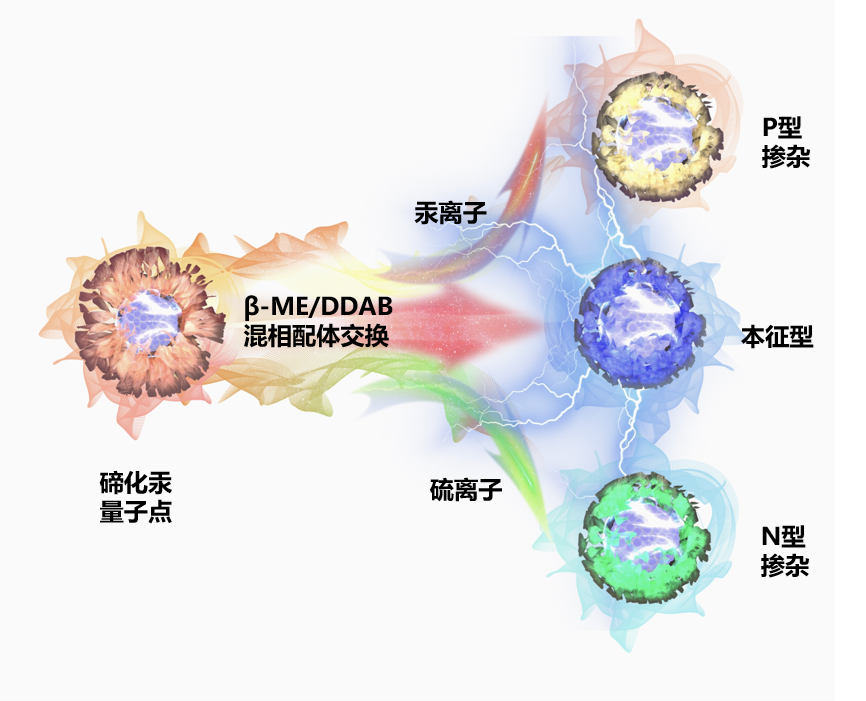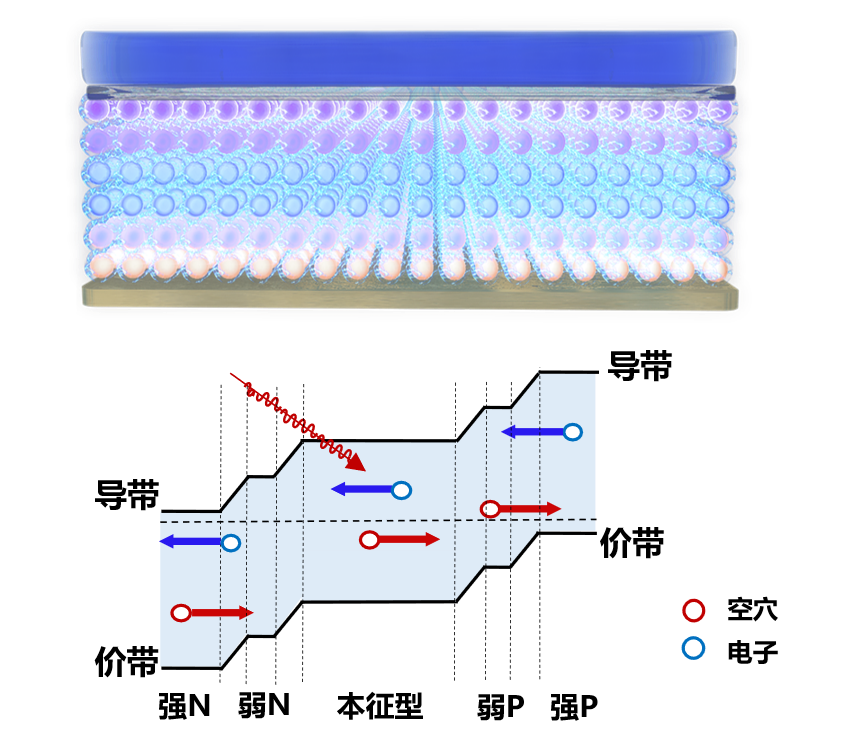

Research on High-Operating-Temperature Quantum Dot Photodetectors
Mid-infrared is an important atmospheric window providing additional thermal information. Compared with visible, the mid-infrared has significant value in medical detection, meteorological remote sensing, military reconnaissance, and space exploration. However, information in this wavelength cannot be directly perceived by human eyes. Infrared photodetectors use photoelectric technology to break through human visual barriers and detect infrared radiation emitted by objects in a passive manner. Currently, mid-infrared photodetectors are mainly based on cadmium mercury telluride (MCT), quantum wells (QWs) and type II superlattices, which are not only difficult in epitaxial growth method and complicated in flip-bonding process for coupling with readout circuits, but also costly as they must be at low temperature to achieve high detection performance. As an emerging infrared material, colloidal quantum dots (CQDs) are easy to synthesize by chemical thermal injection, and can be directly coupled with readout circuits by "ink-based" liquid-phase processing. In addition, the quantum confinement effect limits the generation of thermally excited carriers in three dimensions, which is expected to achieve non-cooled, low-cost and high-performance mid-wave infrared photodetectors. However, current CQDs and the interface transport and energy band mismatch resulting from the heterojunction design still necessitate the photodetectors to be at liquid nitrogen (80 K) temperature to achieve the background-limited performance. Therefore, there is a long way to go before the theoretically predicted room temperature operation can be realized.
Prof. Menglu Chen's group from School of Optics and Photonics, Beijing Institute of Technology, has proposed the mixed-phase ligand exchange method and successfully prepared CQD ink with various doping states from N-type to P-type. They designed and prepared homojunction devices with "strong P-type, weak P-type, intrinsic, weak N-type, strong N-type" gradient stacking, significantly optimizing the built-in electric field. This achievement increases the operating temperature of the mid-wave infrared QD photodetector to achieve the background-limited performance by 100 kelvin, successfully achieving room temperature operation.
The mixed-phase ligand exchange process involves three steps, including liquid phase ligand exchange, doping modification by surface dipoles and solid-phase ligand exchange. The key is to achieve dense stacking and high carrier mobility of the CQD films by replacing long-chain ligands with short-chain ligands and shortening the gap between CQDs, and to achieve precise control of the doping type and degree of QD films by replacing non-polar ligands with polar ligands. (As shown in Figure 1).

Figure 1. Schematic diagram of quantum dot ligand exchange process.
Based on the material optimization, this work utilizes the traditional material gradient layer design and the "ink-type" processing of CQDs to realize the gradient homojunction device by the gradient stacking of "strong P-type, weak P-type, intrinsic, weak N-type, strong N-type" CQD film layers. (Figure 2)

Figure 2. Schematic diagram of a quantum dot gradient homojunction device and energy bands.
The structure is ingeniously designed. On the one hand, the gradient junction strengthens the built-in electric field, increases the thickness of the depletion layer, and optimizes the generation and separation process of photo-generated carriers. On the other hand, the homojunction avoids the loss of photo-generated carriers caused by the interface transport mismatch, and optimizes the transport and collection process of photo-generated carriers. This work greatly increased the operating temperature of the photodetector. The mid-wave (4-5 μm wavelengths) infrared detector achieves the background-limited performance with the specific detectivity higher than 1011 Jones at 200 K; above 1010 at 280 K. Compared with the conventional QD detectors, the external quantum efficiency of the mid-wave infrared photodetector with a QD gradient homojunction is improved by nearly one order of magnitude, reaching 77%. The applications such as thermal imaging and gas detection are also approved. (Figure 3)

Figure 3. Application validation of spectrometer and IR camera for quantum dot MWIR detector at room temperature.
Outlook:
In summary, this work has developed a mixed-phase ligand exchange method to realize the preparation technology of QDs with medium/high carrier mobility and precise doping control, based on which gradient homojunction photodetectors have been prepared. It breaks the operating temperature limit of mid-infrared photodetectors and greatly promotes the development of non-cooled, low-cost, high-performance infrared detectors.

 E-mail: menglu@bit.edu.cn
E-mail: menglu@bit.edu.cn
 Address: No.5, South Street, Zhongguancun, Haidian District, Beijing(Click here)
Address: No.5, South Street, Zhongguancun, Haidian District, Beijing(Click here)